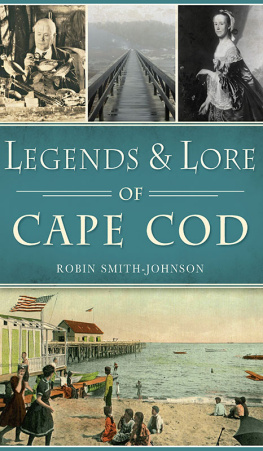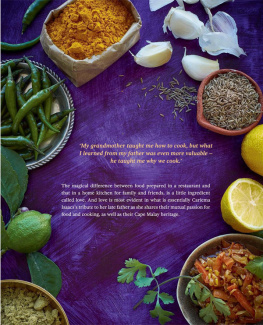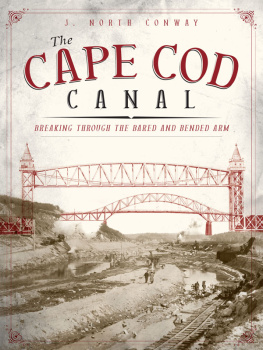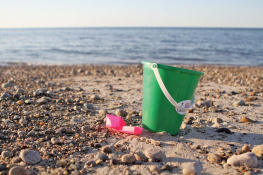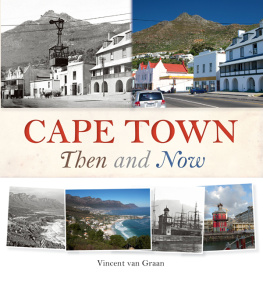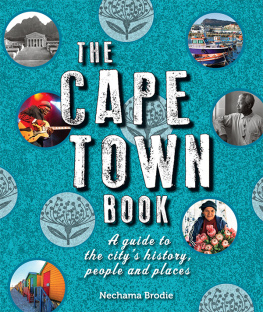

Published by The History Press
Charleston, SC
www.historypress.com
Copyright 2018 by Robin Smith-Johnson
All rights reserved
Front cover: Image of pukwudgie drawn by Sarah Haynes.
First published 2018
e-book edition 2018
ISBN 978.1.43966.423.0
Library of Congress Control Number: 2017963242
print edition ISBN 978.1.46713.858.1
Notice: The information in this book is true and complete to the best of our knowledge. It is offered without guarantee on the part of the author or The History Press. The author and The History Press disclaim all liability in connection with the use of this book.
All rights reserved. No part of this book may be reproduced or transmitted in any form whatsoever without prior written permission from the publisher except in the case of brief quotations embodied in critical articles and reviews.
For my familyfor all your love, support and patience during the writing of this book.
CONTENTS
ACKNOWLEDGEMENTS
This book has been a labor of love, and I could not have done it without the help of libraries and individuals on Cape Cod.
First, I would like to thank Rebekah Ambrose-Dalton, special collections librarian and archivist in the W.B. Nickerson Room at Cape Cod Community College. She was kind enough to help me pick out photographs for this volume. I would also like to thank Jean Young of the Chatham Historical Society for finding period photos of Joseph C. Lincoln as part of my research. I am also deeply appreciative for help from area libraries, including Cotuit, Mashpee and Sturgis libraries.
I wish to thank Paul Pronovost, editor of the Cape Cod Times, for permission to use Times photos. Ritchie Kolnos, IT specialist at the Cape Cod Times, was instrumental in helping me with my photos as well. I would also like to thank Times photographer, Merrily Cassidy, for the author photo.
I would like to thank my mother, Muriel Smith, for sharing the postcard collection from the estate of my late father, Wendell Everett Smith, an antiquarian book dealer. Im grateful to Gregory R. Johnson and Cynthia Sherrick Mitchell for contributing photos to this collection. I also want to thank my sister, Laurie Smith Murphy, for sharing her recollections of the 1973 Nauset Beach riptide disaster.
Im indebted to Barbara Clark for help in editing my book, as well as Devin Wells Johnson for a careful reading of the manuscript. I also wish to thank Gwenn Friss and Susan Eastman of the Cape Cod Times for their support and friendship.
I would like to thank the wonderful folks at The History Press: Lia Grabowski, acquisitions editor, for bringing me onboard with this project, Chad Rhoad, senior acquisitions editor, and Ryan Finn, senior project editor, for keeping me on track with my manuscript.
I would like to thank my family for their uncomplaining support. It has been a wonderful journey of historical research and exploration.
INTRODUCTION
Cape Cod is a unique, beautiful and sometimes curious place. What is meant by curious? To be curious means not only to discover something strange or unusual, but also to have the desire to learn about somethingto want to know more. It is in this spirit, the spirit of exploration, that these stories have been compiled to entice and entertain the reader.
There are stories about famous people, from the notorious Tony Costa murders to the homey chronicles of Joseph Lincoln; famous places, like the Sandwich Glass Museum and the Chatham Marconi Station; and fantastical stories about the Pukwudgies and the elusive Marsh People. Old books, news articles and microfilm have fleshed out this investigation.
The Cape offers strange and surprising tales, from a 1973 riptide disaster at Nauset Beach in Orleans to the presence of a lonely ghost boy at the Hyannis Public Library. The old saying that truth is stranger than fiction often applies to these narratives. Irish novelist Laurence Sterne once wrote, What a large volume of adventures may be grasped within the span of his little life by him who interests his heart in everything.
Digging up the past is a joy and sometimes an obsession. Stories call out demanding to be told. Come walk the byways and winding lanes of this quaint and dynamic place. There is so much to experience and treasure in this place by the sea.
THE CREATION OF THE CAPE COD CANAL
The Cape Cod Canal is a man-made waterway that connects Cape Cod to the mainland, but for Cape Codders, the canal is so much more. It is the first thing visitors see when they arrive at their vacation destination. For locals, the experience of seeing the bridges and the glimmering waters of the canalway serves as the symbolic entrance to Cape Cod.
Did you know that it took 317 years for the Cape Cod Canal to become a reality? Myles Standish envisioned a canal across the narrow neck of land joining Cape Cod to the mainland. Before the canal was built, ships and schooners had to navigate around the Cape, with its treacherous access to the Atlantic Ocean. A canal was seen as being a practical solution.
In 1862, it was proposed that the canal be built at sea level, instead of implementing earlier plans that called for a lock canal. Then, in 1880, a group called the Cape Cod Canal Company was granted a charter to begin digging. At first, the five hundred workers brought in for the job tried to dig with shovels and wheelbarrows. Later, F.A. Lockwood constructed a huge dredge to supplement the workers efforts. However, the project was ultimately abandoned because it was costly and the digging methods ineffective.
In 1899, a new charter was granted, and the work was headed by New York financier August Belmont. On March 27, 1907, the Boston, Cape Cod and New York Canal Company entered into a contract with the Cape Cod Construction Company. Work finally began on June 19, 1909, using much more modern equipment. The canal opened five years later on July 29, 1914. The project cost $16.1 million. Initially, the canal was opened for sailing vessels of limited draft, with the full depth of twenty-five feet reached in 1918. The owners charged each passing vessel for use of the canal.
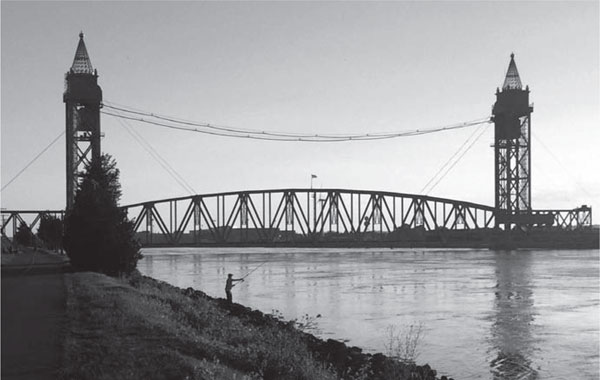
The Railroad Bridge spanning the Cape Cod Canal. Courtesy of the Cape Cod Times.
The Federal Railroad Administration took over the canal during World War I. When it tried to return it after the war was over, the original owners refused the deal. Then, on March 31, 1928, the federal government agreed to pay $11.5 million for the canal. The canal has operated as a toll-free waterway ever since. Later, the channel was widened in 1932 and 1935. The first Bourne Bridge was built between 1910 and 1913 and was later replaced with the present bridge in 1935. The Sagamore Bridge also opened in 1935; it originally was built as a drawbridge before the canal was widened. The Railroad Bridge, a vertical-lift bridge, carries railroad traffic across the canal. Construction started in 1935, and the bridge officially opened on December 29, 1935.
The canal itself opened on a limited basis in 1914 and was completed in 1916. It was widened and deepened, and by 1940, the Cape Cod Canal was the widest sea-level canal in the world. According to the U.S. Army Corps of Engineers website, ship traffic can safely transit the waterway, and now more than twenty thousand vessels of all types use the canal annually.
Next page

